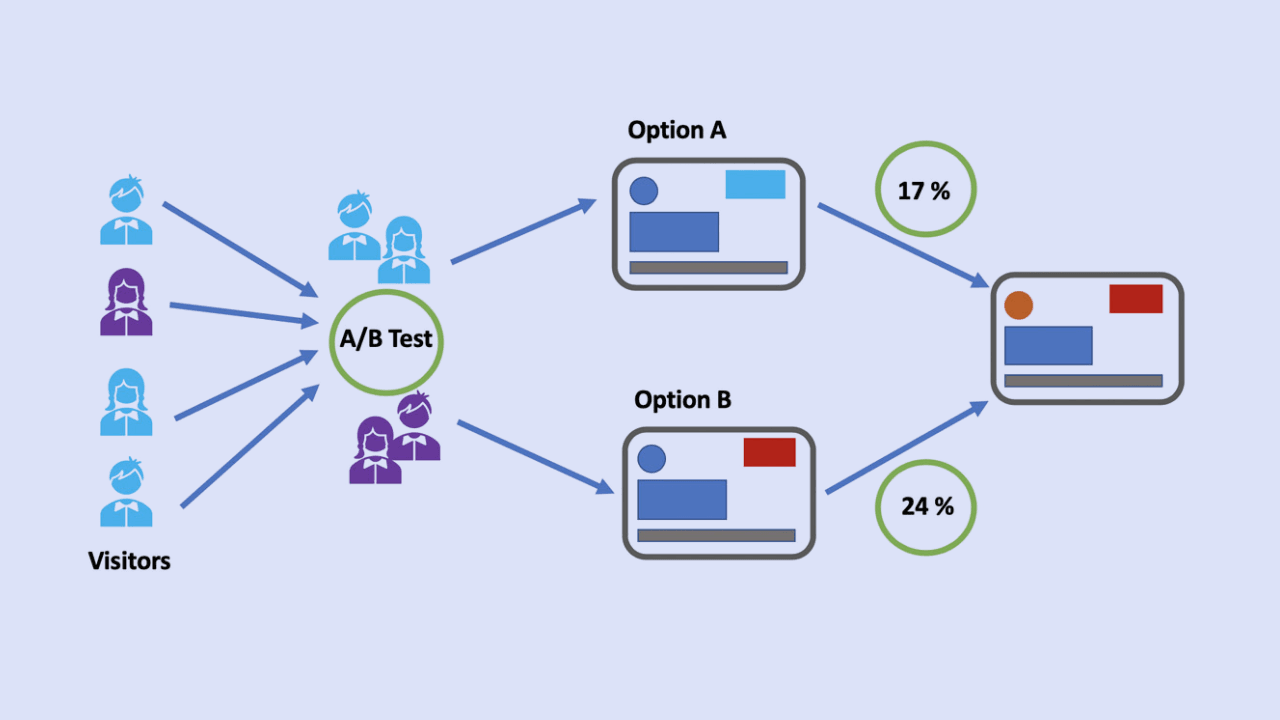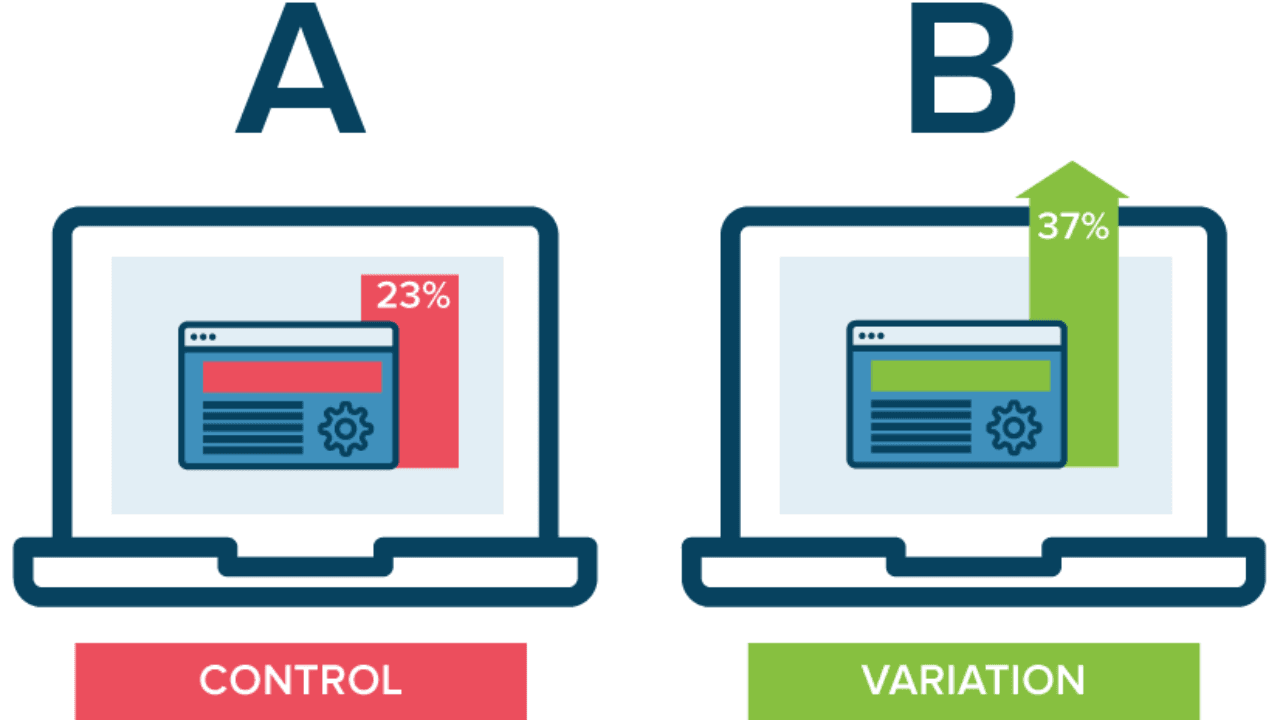In today’s competitive e-commerce landscape, small improvements in conversion rates can lead to substantial increases in revenue. A/B testing empowers brands to optimize their online storefronts through controlled, data-driven experiments. For Shopify merchants, especially those using Shopify Hydrogen, A/B testing offers a powerful pathway to achieving higher performance and personalized customer experiences.
This comprehensive guide will walk you through the fundamentals of A/B testing, explain why it’s essential for Shopify merchants, explore the advantages of Shopify Hydrogen for testing, and provide a roadmap for getting started.
I. What Is A/B Testing?
A/B testing, also known as split testing or bucket testing, is the process of comparing two versions of a webpage, email, or other digital asset to determine which one performs better based on user behavior. In its simplest form, 50% of users are shown the original version (Version A) while the remaining 50% see the variant (Version B). The version that results in higher conversions, click-throughs, or other key metrics is declared the winner.
 This technique is especially valuable for understanding what resonates with your target audience, allowing businesses to generate more revenue from their existing traffic and build a data-informed marketing strategy.
This technique is especially valuable for understanding what resonates with your target audience, allowing businesses to generate more revenue from their existing traffic and build a data-informed marketing strategy.
II. How A/B Testing Works: Step-by-Step
The A/B testing process typically involves the following steps:
-
Define Your Goal: Start by identifying the objective of your test. Common goals include increasing conversions, improving click-through rates, or boosting average order value.
-
Choose the Element to Test: You can test a wide range of elements such as call-to-action buttons, headlines, product pricing, page layouts, and more.
-
Create Variations: Develop two versions of the element. Version A serves as the control (the original), while Version B is the variant with one specific change.
-
Run the Test: Split your audience evenly and present each group with a different version. Run the test for a sufficient duration—usually one to two weeks—to ensure statistically significant results.
-
Collect Data: Track key performance indicators such as conversion rates, user engagement, and sales metrics for both versions.
-
Analyze the Results: Compare the data to determine which version achieved the desired goal more effectively.
-
Implement the Winner: If the variant outperforms the control, roll it out fully to all users. This version becomes your new baseline for future experiments.
Important Note: While conversion rate is a key metric, it's essential to consider the value of those conversions. For example, offering a product for free may increase conversions but not revenue. Always track performance metrics through to the final sale
III. When Should You Start A/B Testing?
A/B testing becomes truly effective when your site has a substantial and consistent volume of traffic. Most experts recommend having at least 100,000 monthly visitors to generate statistically significant test results. Additionally, it’s essential to have conversion tracking mechanisms in place before you begin testing.
3.1. Average Conversion Rates in E-commerce
Understanding your baseline conversion rate is crucial for setting realistic goals. According to Littledata:
- Overall e-commerce average: 2.27%
- Jewelry stores: 1.75%
- Apparel stores: 1.41%
- Food and beverage stores: 3.58%
Small improvements in conversion rates can have a major impact on revenue. For example, increasing your conversion rate from 1% to 2% can effectively double your revenue without increasing traffic.
3.2. Benefits of A/B Testing

- Informed Decision-Making: Base your website changes on real data rather than assumptions.
- Higher Conversions: Even small changes can lead to measurable improvements.
- Optimized User Experience: Understand what users prefer and eliminate friction.
- Revenue Growth: Structured A/B testing programs can lead to a 25% or more increase in sales, according to Monetate.
3.4. A/B Testing Tools for Shopify
# Simple Tools
If you are just getting started with A/B testing, simple tools offer a user-friendly interface and quick implementation:
- Google Optimize (Sunset but formerly popular)
- Neat A/B Testing
- Convert.com
These tools allow basic experiments such as color changes, text adjustments, or hiding elements.
# Advanced Tools
For more complex tests, advanced platforms provide features such as multivariate testing, detailed analytics, and integration with marketing automation tools:
- Optimizely – Known for enterprise-grade features
- VWO (Visual Website Optimizer) – Offers both A/B and multivariate testing
- Split.io – Feature flagging and experimentation platform
These tools help uncover deeper user behavior patterns and drive more nuanced decisions.
IV. Why Choose Shopify Hydrogen for A/B Testing?
Shopify Hydrogen is a React-based framework created for high-performing, customizable Shopify storefronts. It’s particularly suitable for businesses that have already found product-market fit and are looking to scale intelligently.

-
Custom Functionality: Unlike traditional Shopify themes that rely on third-party plugins for additional features, Hydrogen provides complete control over your storefront’s code. This means you can implement complex A/B tests without being limited by the capabilities of pre-built themes or apps.
-
Control and Flexibility: Hydrogen allows developers to:
- Customize every element of the customer journey
- Avoid conflicts caused by multiple plugins
- Execute more advanced and scalable testing strategies
This level of flexibility is ideal for fast-growing brands with unique user experience needs.
V. Success Stories and Case Studies
A/B testing has delivered measurable success for many leading brands, showing its potential to drive growth and enhance user experience. According to Optimizely, companies like HP and IBM have achieved up to 50% improvements in conversion rates through structured, data-informed testing. These results highlight how experimentation can significantly impact business performance.
Research from Invesp shows that companies with a structured A/B testing program are 70% more likely to see conversion improvements. This reinforces the value of consistency—random testing rarely delivers the same impact as an ongoing, strategic approach.
Supporting this, HubSpot reports that brands conducting regular A/B tests have an average conversion rate 13% higher than those that don’t. These results prove how even minor, data-backed changes can lead to meaningful long-term gains.
For example, a mid-sized online jewelry store tested two CTA versions on product pages. One read “Add to Cart,” while the variant said “Shop Now – Limited Stock.” After two weeks, the store found that the second version increased clicks and purchases by 20%. This simple, data-driven change directly improved revenue and customer engagement.
These success stories affirm a key lesson in eCommerce: assumptions are limited. Shopify Hydrogen enables businesses to make smarter, evidence-based decisions that drive real growth.
VI. Best Practices for Effective A/B Testing
- Start with a Clear Hypothesis: Define what you’re testing and why.
- Run One Test at a Time: Avoid overlapping tests to prevent data contamination.
- Test One Variable: Changing multiple elements at once makes it hard to attribute results.
- Ensure Statistical Significance: Use a reliable sample size calculator and run tests long enough.
- Iterate Continuously: After declaring a winner, test again with new hypotheses to continue improving.
According to VWO, the success of A/B testing depends on consistent iteration, accurate data analysis, and clearly defined goals.
Conclusion
Shopify Hydrogen opens a new frontier for A/B testing by giving brands the ability to test, learn, and iterate with full control. In the world of headless commerce, the ability to build dynamic, performance-optimized, and test-driven storefronts gives you a clear competitive advantage.
By combining Hydrogen’s flexible architecture with a robust A/B testing strategy, you can deliver a superior shopping experience, boost conversion rates, and future-proof your eCommerce business.
Now that you know everything you need to get started, the next step is clear: pick your first hypothesis and launch your first test. The data will show you the way forward.
Read more:
